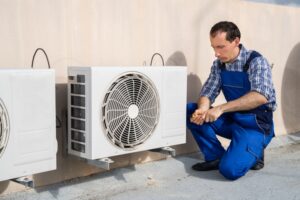HVAC dampers use mechanical and electrical components to keep your Cutler Bay, FL, home at an optimal temperature. The HVAC damper controls airflow into and out of your home. This guide will explain all the ins and outs of HVAC dampers so you can better care for your system and save money on energy costs.
What’s an HVAC Damper?
A damper controls the amount of airflow for comfortable room temperature in your house. HVAC dampers have valves that allow your home to change airflow patterns by restricting or maximizing airflow in particular parts of the house. Dampers are generally shaped like flat plates. They can close or partially open the air duct system for ventilation purposes.
How Do HVAC Dampers Function?
An HVAC damper attaches to a duct that runs between your HVAC system and living spaces. During the summer, the damper opens to allow cool air into your home and then closes again after cooling down.
Types of Air Conditioning HVAC Dampers
Here are some types of HVAC Dampers:
- Manual dampers – You use a handle or knob to open and close a manual damper.
- Automatic dampers – Automatic dampers operate by turning electronically with airflow through a duct.
- Butterfly flat dish dampers – Round blades and seals prevent the entry of foreign materials with a central hinge create these types of dampers.
- Blade dampers – They are either parallel blade dampers with blades that move parallel or opposed blade dampers that move in the opposite direction.
- Guillotine dampers – These are best for use when you need positive isolation.
- Louver dampers – They fit any duct size, making them the most used dampers.
- Inlet vane dampers – These dampers affect the flow of air entering the blower, reducing the pressure and keeping the speed the same.
We have an amazing team of HVAC experts in Cutler Bay, FL. Work with RCI Air Conditioning Company for a quick and honest response to your air conditioning needs.
Image provided by iStock






